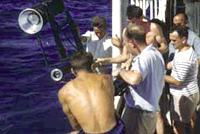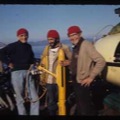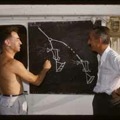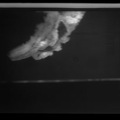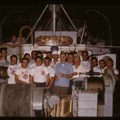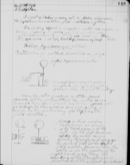Introduction
by Claire Calcagno
In addition to exploring terrestrial subjects, Doc Edgerton was intrigued by the unique engineering challenges of underwater research. In order to “see” underwater, Doc had to design tools that could withstand enormous and varying pressure, stay protected from salt contamination, and record information through remotely operated instruments that could be interpreted by scientists in their research vessels at the surface. Doc developed underwater cameras, lights and deep-sea recording instruments for imaging and detection efforts at the cutting edge of oceanographic research. His underwater instruments, which used light as well as sound to penetrate the dark depths, were applied to many disciplines including geophysics and physical oceanography, to marine biology and underwater archaeology.
Doc’s particular expertise with the generation and precise control of high-energy short pulses – whether for stroboscopes, high-speed flashes or for modulator switches for atom bombs – were turned towards the problems of underwater acoustic waves, to improve and shorten the sound pulse length and thereby improve resolution. His sound-based tools included so-called pingers, thumpers, boomers, sub-bottom profilers, sparkers and side scan sonar.
Limited accessibility – hard to reach areas – raised operating costs astronomically; thus oceanographic expeditions frequently featured several overlapping scientific missions, such as geologic mapping and shipwreck investigations. Doc collaborated with scientists from around the world, including ocean explorers Jacques-Yves Cousteau, Edwin Link, and top scientists from the Woods Hole Oceanographic Institution, which has always had a close affiliation with MIT. Doc’s international reputation and promotion of scholarly exchanges led to his invitation in 1969 to join a Soviet oceanographic team investigating the mid-Atlantic Ridge.
Ever the inspiring teacher, Doc didn’t limit himself to the scientific or academic communities: public outreach was an important part of his mission. Through collaborations with organizations such as the National Geographic Society and the New England Aquarium (which maintains an active Edgerton Research Laboratory), Edgerton communicated with the broadest audiences. Edgerton’s research exemplifies his philosophy as a scientist and engineer: his belief in the primacy of hands-on field research; his appreciation for the potential to make serendipitous discoveries through careful observation; his openness to failure as inspirational challenge.
Friends claimed that Doc must have seen more new things for the first time than any other person in the world.
Friends claimed that Doc must have seen more new things for the first time than any other person in the world.

